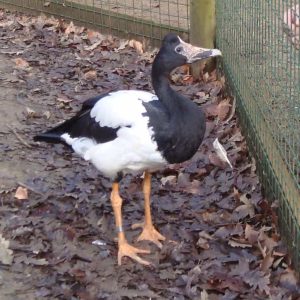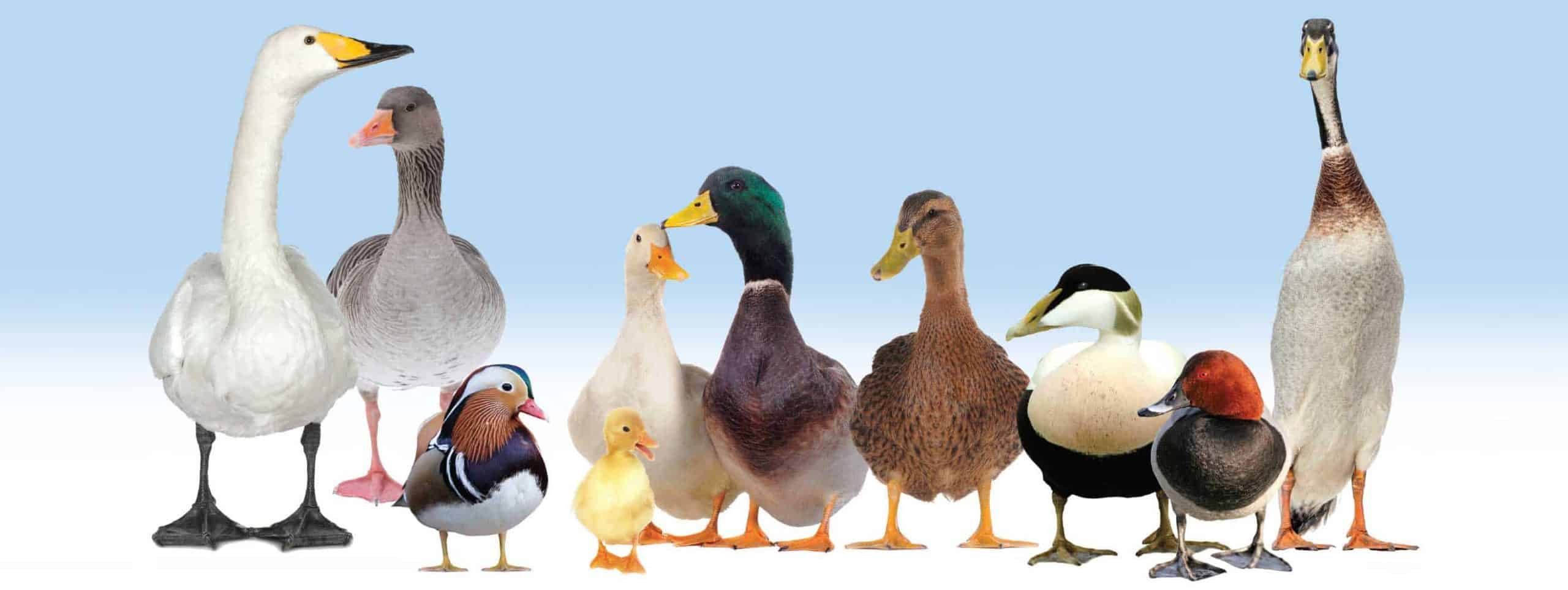The primitive Magpie Goose is in a separate tribe all on its own – the Anseranatidae. The scientific name Anseranas semipalmata, translates directly as ‘half-webbed goose-duck’.
It possibly forms the links between the wildfowl and the more terrestrial neotropical screamers. Click the image for more information.
Sadly (unless you have a huge staff), they do not lend themselves to the ornamental garden or lushly planted pen. They’d enjoy it hugely but it would be trashed within a season. Those strong claws and bills are adapted to digging out rhizomes and bulbs. Seeds of the aquatic grasses form the balance of their diet and these will be pulled to ground level when adults are proffering morsels to their young. Despite all this, these are charming birds for their personalities and justifyably deserve a place when they can have the right habitat. Given sufficient space they should prosper when some of the vigorous, nay rampant, vegetation is planted. If only they had a taste for Japanese Knotweed.
In southern regions of Australia populations diminished to an unsustainable level half a century ago. Largely due to hunting and habitat destruction. This trend has been reversed recently following some sucessful reintroduction projects, even to the extent that hunting has started again. No formal plan for the recovery and future management of this species has been prepared to date. We can only hope that increasing awareness of environmental issues and fauna preservation will be in the Magpie Goose’s favour. Wetland habitats remain under threat in Australia – increasing human populations in dry areas and climate change make water a scarce resource and the Magpie Goose may come off second best.



